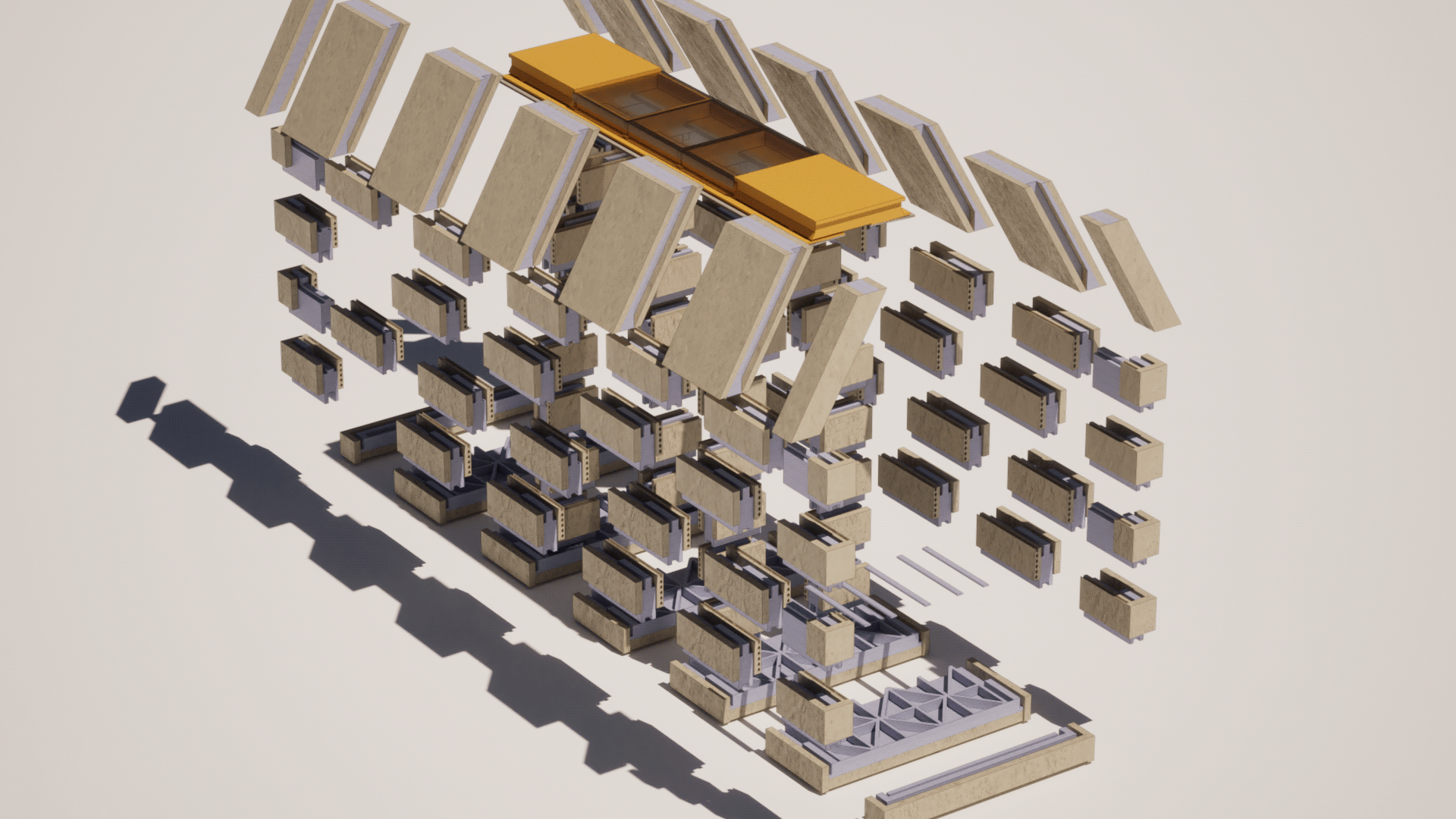

View from Kala Patthar summit on south ridge of Mount Pumori, Nepal. All photos/footage by Hamish Angus McAndrew unless otherwise stated.

INTRODUCTION
In November 2024, a trek to Everest Base Camp in Nepal highlighted, first hand, the challenges of life at high altitudes above 5000m.
Photo by Lissie Tate.

Accompanying me on this adventure was Asela Rodrigo - Founder and CTO of Prolojik Ltd, a lighting technology company based in London with a keen focus on developing and integrating more sustainable systems within our built environment.

Driving from Kathmandu to the airfield at Ramechhap, Asela and I traversed the devastating aftermath of severe flooding that occurred over the 2024 monsoon season. Carving its way through landscapes and gouging out softer soils and loose rocks, these floods triggered landslides and swept the foundations out from under roads and buildings - leading to their collapse and leaving many without homes in areas that were now largely inaccessible by road. Indeed, due to its earthquake prone location along the collision line of the Indian and Eurasian tectonic plates, Nepal is a country that repeatedly braves more than its fair share of natural disasters. Compounding this, the topography of Nepal’s more mountainous regions create a logistical challenge that hinders the ability to quickly assist some of its most remote and poorest areas when disaster strikes.

The villages within the Khumbu region that we trekked through are connected solely by a network of undulating footpaths and narrow suspension bridges. After flying into Lukla at 2860m, there are no roads. Goods and materials are mainly transported through an ensemble of yak, donkeys and the impressive muscle power of the local Sherpa communities.

These challenges have shaped the vernacular approach to the area's built environment.
Wherever possible, building materials (such as stone) are sourced locally from the surrounding landscape, while less readily available items (such as timber and corrugated roof coverings) need to be flown in by helicopter.

This reliance on helicopters and air transport can place strict limitations on the weight and, to an extent, the size and aerodynamics of delivery packages and construction materials as they are towed through the air at an altitude that many helicopter engines might struggle with.
[ delivery of water to the Himalayan village of Lobuche at an elevation of ~5000m ]

This not only presents difficulties getting materials in, it also presents a challenge in getting materials out - particularly with regards to waste materials.
Above the bustling Himalayan settlement of Namche Bazaar, a local initiative called Sagarmatha Next is tackling this issue - reducing the amount of refuse that needs to exit the region by transforming these waste materials into sculptural works of art and molded souvenirs made from recycled plastic.
[ Overlooking Namche Bazaar ]
Inspired by this ethos, Asela and myself recognised potential construction applications of repurposed waste materials, alongside a potential synthesis of sustainable technologies that could respond to the challenges of the Himalayas and beyond.

Viewing the accumulation of waste as an opportunity, rather than purely a problem, our concept imagines structural elements made from recycled plastic and encased in a mycelium fungi composite grown from and through agricultural refuse to produce rigid shapes that provide both thermal and acoustic insulation with flame-retardant and self-extinguishing attributes.
CONCEPT

With this approach, both plastic waste and agricultural waste could become a prospective building material - preventing it from spilling out into the environment and allowing communities to build a bank of modular components from otherwise discarded local refuse.

These components would be light enough to be transported by foot, yak, donkey, or drone, and could be distributed to each village so that they are ready to be assembled at a moment’s notice.

Once assembled, a modular “hood” element fits on top and unfolds to reveal an array of photovoltaics that can power the needs of the occupants - everything from lighting and power outlets, to ventilation and safe drinking water.

The modular configuration of these structures allows a variety of semi-permanent functions that address life beyond the immediate need for a shelter in response to disaster - providing occupants with a level of dignity (above what could generally be offered by the tent-like structures that would otherwise be deployed) and allowing life to go on more seamlessly as they rebuild their communities.


We look forward to sharing our concepts as they develop over the coming months.
On 25/09/2025, Asela and myself presented our ideas at this year's Circular Lighting Live event
hosted by Recolight at the Minster Building in London.